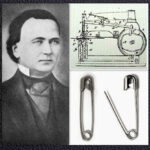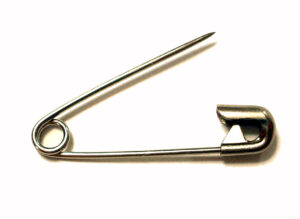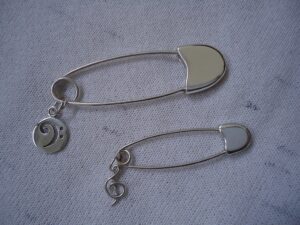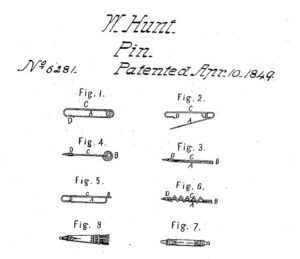
 Walter Hunt was a mechanic and independent inventor from New York. That basically meant he dabbled at inventions, but in this case, while he may not have realized the value of his invention, he would go on to invent on of the most important and versatile tools there is. The sad thing for Hunt is that because he didn’t realize what he had, he sold his patent for far less than its value. On April 10, 1849, Hunt sold the patent for his safety pin, unique with its metal loop that created a spring for just $400 ($16,502 today). While $16,502 sounds like a lot of money, the purchaser would go on to make millions off of Hunt’s invention. Hunt would never receive another penny.
Walter Hunt was a mechanic and independent inventor from New York. That basically meant he dabbled at inventions, but in this case, while he may not have realized the value of his invention, he would go on to invent on of the most important and versatile tools there is. The sad thing for Hunt is that because he didn’t realize what he had, he sold his patent for far less than its value. On April 10, 1849, Hunt sold the patent for his safety pin, unique with its metal loop that created a spring for just $400 ($16,502 today). While $16,502 sounds like a lot of money, the purchaser would go on to make millions off of Hunt’s invention. Hunt would never receive another penny.
Hunt was born on July 29, 1796, in Martinsburg, New York. Because he had a debt of $25 that he needed to pay, he scrambled to invent something that would earn him some money. Playing with a piece of metal wire, he twisted and turned it into what he called a “dress pin,” which had a spring at one end that forced the other end into a clasp. The invention wasn’t completely new, since ancient Romans used something similar for jewelry, but rather it was simply an improvement of the original design. Another version of a safety pin came out in 1842, but it had no spring, unlike the pins we know today. Hunt decided to patent his invention, and it was given US Patent Number 6,281. Today, many years later, Hunt’s design still has countless everyday uses, including fastening clothing and diapers. At one time a large version was used to adorn the outside of a wrap-around skirt.
The safety pin wasn’t his greatest invention, nor the one which brought him the most money, but it has 
 changed the lives of countless numbers of people to this day. In his lifetime, Hunt achieved moderate success and invented many items, including a repeating rifle, a flax spinner, a fountain pen, a knife sharpener, an ice plough, and one of the world’s first sewing machines with an eye-pointed needle. Hunt’s sewing machine actually triggered a patent dispute with another inventor, Elias Howe. He died of pneumonia at his place of business in New York City on June 8, 1859. He was 62 years old.
changed the lives of countless numbers of people to this day. In his lifetime, Hunt achieved moderate success and invented many items, including a repeating rifle, a flax spinner, a fountain pen, a knife sharpener, an ice plough, and one of the world’s first sewing machines with an eye-pointed needle. Hunt’s sewing machine actually triggered a patent dispute with another inventor, Elias Howe. He died of pneumonia at his place of business in New York City on June 8, 1859. He was 62 years old.


Leave a Reply